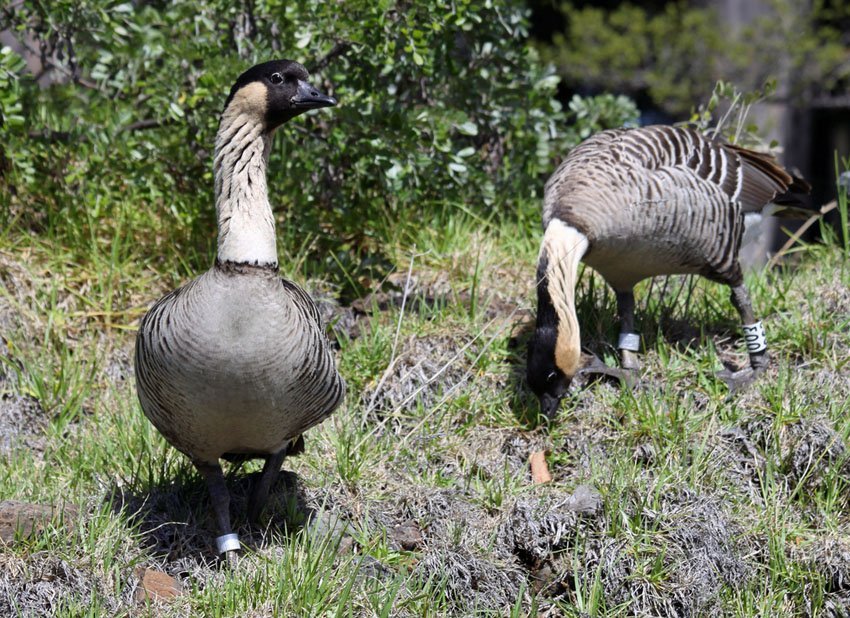Hawaiian Goose - Nene

Hawaiian Goose - Nene Overview
The nene is the state bird of Hawaii. It can be found on Maui (at Haleakala National Park), on the Big Island (at Hawaii Volcanoes National Park, Mauna Loa and Pu'u Wa'awa'a), on Kauai (Koke'e State Park, Kilauea Point) and on Molokai.
The nene's habitat is grasslands, scrublands, golf courses and open lowlands. They feed on various native and introduced plants. Breeding season is from November to June. They build the nests hidden under bushes and lay between two and five eggs at a time.
Nearly extinct in 1951, captive-bred birds were reintroduced into the wild in the 1950s on the Big Island, Maui and Kauai. Their numbers have increased a lot on Kauai in recent years since there are no mongooses on this island, which are predators of the nene.
Frequently Asked Questions
Is the nene Hawaii's state bird?
Yes. The Hawaiian goose, known as the nene, is the official state bird of Hawaii and is unique to the Hawaiian Islands.
Where can I see nene in Hawaii?
Nene can be seen on Maui, the Big Island, Kauai, and Molokai - often in national parks like Haleakala and Hawai'i Volcanoes, or at Kilauea Point and KOke'e State Park.
When is the nene breeding season?
The breeding season runs from November through June. Nene usually nest under shrubs and lay 2 to 5 eggs at a time.
Was the nene ever endangered?
Yes. By 1951, the nene was nearly extinct. Thanks to conservation efforts and reintroduction programs, especially on islands without predators like mongooses, their population has rebounded.
What do nene eat?
Nene feed on a variety of native and introduced grasses, herbs, and shrubs found in grasslands, scrublands, and even golf courses.








